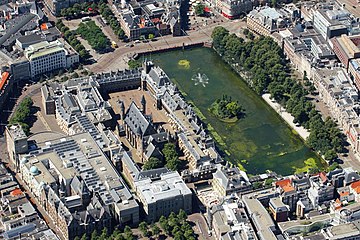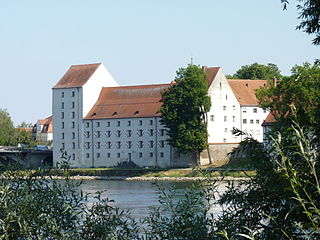Bavaria-Straubing
- View a machine-translated version of the German article.
- Machine translation, like DeepL or Google Translate, is a useful starting point for translations, but translators must revise errors as necessary and confirm that the translation is accurate, rather than simply copy-pasting machine-translated text into the English Wikipedia.
- Do not translate text that appears unreliable or low-quality. If possible, verify the text with references provided in the foreign-language article.
- You must provide copyright attribution in the edit summary accompanying your translation by providing an interlanguage link to the source of your translation. A model attribution edit summary is
Content in this edit is translated from the existing German Wikipedia article at [[:de:Straubing-Holland]]; see its history for attribution. - You may also add the template
{{Translated|de|Straubing-Holland}}to the talk page. - For more guidance, see Wikipedia:Translation.


Bavaria-Straubing denotes the widely scattered territorial inheritance in the Wittelsbach house of Bavaria that were governed by independent dukes of Bavaria-Straubing between 1353 and 1432; a map (illustration) of these marches and outliers of the Holy Roman Empire, vividly demonstrates the fractionalisation of lands where primogeniture did not obtain. In 1349, after Emperor Louis IV's death, his sons divided Bavaria once again: Lower Bavaria passed to Stephan II (died 1375), William (died 1389) and Albert (died 1404). In 1353, Lower Bavaria was further partitioned into Bavaria-Landshut and Bavaria-Straubing: William and Albert received a part of the Lower Bavarian inheritance, with a capital in Straubing and rights to Hainaut and Holland.[1] Thus the dukes of Bavaria-Straubing were also counts of Hainaut, counts of Holland, and of Zeeland.
In 1425, with the death of Duke John III, the Straubing dukes became extinct in the male line. His possessions were partitioned between the Dukes of Bavaria-Munich, Bavaria-Landshut and Bavaria-Ingolstadt in 1429 under arbitration of the emperor. His niece Jacqueline became Countess of Hainaut in her own right.
Dukes of Bavaria-Straubing
- Jointly held by William I and Albert I 1347-1388
- Albert I "of Holland" 1388-1404
- Albert II 1389-1397 jointly held with Albert I
- William II 1404-1417
- John III 1418-1425 disputed with
- Jacqueline, Countess of Hainaut 1417-1432
After the succession struggle between Jacqueline and her uncle John, Bavaria-Straubing was divided between Bavaria-Ingolstadt, Bavaria-Landshut, and Bavaria-Munich.
- Straubing Castle, Bavaria
-
 Binnenhof, Den Haag, Holland
Binnenhof, Den Haag, Holland -
 Nieuwe Kerk (Delft), built under the rule of Albert I, Duke of Bavaria-Straubing-Holland
Nieuwe Kerk (Delft), built under the rule of Albert I, Duke of Bavaria-Straubing-Holland
Footnotes
- ^ Stephan II received the rest of Lower Bavaria. Jacqueline never ruled Bavaria. She bore the title, but women could not rule in Bavaria. She did rule in Holland and Hainault. Her uncle Johann succeeded her father Wilhelm in Bavaria-Straubing, and was the last ruler of his branch.
- v
- t
- e
- Duchy of Bavaria
- Upper Bavaria
- Lower Bavaria
- Bavaria-Ingolstadt
- Bavaria-Landshut
- Bavaria-Munich
- Bavaria-Straubing
- Garibald I (555–591)
- Tassilo I (591–610)
- Garibald II (610–625)
- Theodo (c.680–716)
- Theodbert (c.716–c.719)
- Theobald (c.716–c.719)
- Tassilo II (c.716–c.719)
- Grimoald (715–725)
- Hugbert (725–736)
- Odilo (736–748)
- Grifo (748)
- Tassilo III (748–788)
- Louis II the German (King: 817–843)
- Carloman (King: 876–880)
- Louis III the Younger (King: 880–882)
- Charles the Fat (King: 882–887)
- Engeldeo (Margrave: 890–895)
- Luitpold (Margrave: 895–907)
- Arnulf (907–937)
- Eberhard (937–938)
- Berthold (938–947)
- Henry I (947–955)
- Henry II the Quarrelsome (955–976, 985–995)
- Otto I (976–982)
- Henry III the Younger (983–985)
- Henry IV (995–1004, 1009–1017)
- Henry V (1004–1009, 1017–1026)
- Henry VI (1026–1042)
- Henry VII (1042–1047)
- Conrad I (1049–1053)
- Henry VIII (1053–1054, 1055–1061)
- Conrad II (1054–1055)
- Otto of Nordheim (1061–1070)
- Welf I (1070–1077, 1096–1101)
- Henry VIII (1077–1096)
- Welf II (1101–1120)
- Henry IX the Black (1120–1126)
- Henry X (1126–1138)
- Leopold I (1139–1141)
- Henry XI Jasomirgott (1143–1156)
- Henry XII the Lion (1156–1180)
- Otto the Redhead (1180–1183)
- Agnes of Loon (Regent: 1183–1191)
- Louis I (1183–1231)
- Otto the Illustrious (1231–1253)
- Louis II the Strict (1253–1255; Upper: 1255–1294)
- Henry XIII (Lower: 1253–1290)
- Louis III (Lower: 1290–1296)
- Stephen I (Lower: 1290–1310)
- Otto III (Lower: 1290–1312)
- Matilda (Upper: Regent: 1294–1302)
- Rudolph I (Upper: 1294–1317)
- Henry XV the Natternberger (Lower: 1312–1333)
- Otto VI (Lower: 1310–1334)
- Henry XIV (Lower: 1310–1339)
- John I the Child (Lower: 1339–1340)
- Louis IV (Upper: 1301–1340; 1340–1347)
- Otto V, (1347–1349; Upper: 1349–1351; Landshut: 1373–1379)
- Louis V the Brandenburger, (1347–1349; Upper: 1349–1361)
- Meinhard I (Upper: 1361–1363)
- Louis VI, (1347–1365)
- Stephen II, (1347–1349; Lower: 1349–1353; Landshut: 1353–1375; Upper: 1363)
- William I, (1347–1349; Lower: 1349–1353; Straubing: 1353–1388)
- Albert I, (1347–1349; Lower: 1349–1353; Straubing: 1353–1404)
- Albert II (Straubing: 1389–1397)
- William II (Straubing: 1404–1417)
- Jacqueline (Straubing: 1417-1429)
- John III the Pitiless (Straubing: 1417-1425)
- William III (Munich: 1397–1435; Straubing: 1429–1435)
- Ernest (Munich: 1397–1438; Straubing: 1429–1438)
- Frederick I the Wise (1375–1392; Landshut: 1392–1393)
- John II (1375–1392; Munich: 1392–1397)
- Stephen III the Magnificent (1375–1392; Ingolstadt: 1392–1413)
- Louis VII the Bearded (Ingolstadt: 1413–1443)
- Louis VIII the Hunchback (Ingolstadt: 1443–1445)
- Henry XVI the Rich (Landshut: 1393–1450; Ingolstadt: 1447–1450)
- Albert III (Munich: 1438–1460)
- John IV (Munich: 1460–1463)
- Sigismund (Munich: 1460–1467; Dachau: 1467–1501)
- Louis IX the Rich (Landshut: 1450–1479)
- George I the Rich (Landshut: 1479–1503)
- Albert IV the Wise (Munich: 1465–1505; 1505–1508)
- William IV the Steadfast (Munich: 1460–1508; Landshut: 1503–1508; 1508–1550)
- Louis X, Duke (1516–1545)
- Albert V the Magnanimous (1550–1579)
- William V the Pious (1579–1597)
- Maximilian I (1597–1623)
 | This Bavaria location article is a stub. You can help Wikipedia by expanding it. |
- v
- t
- e













